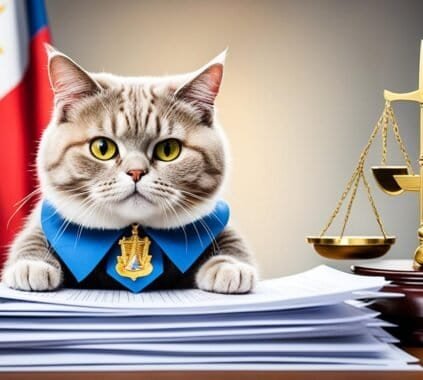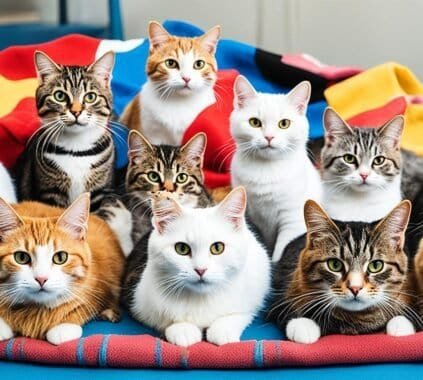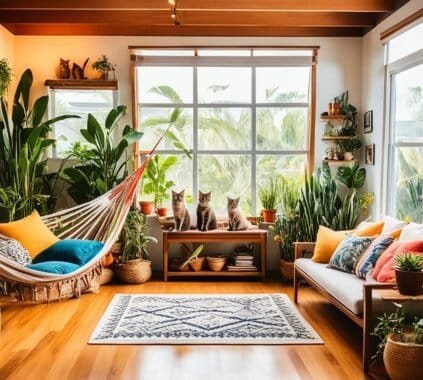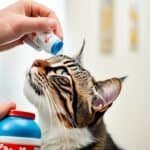Owning a cat can bring great joy and companionship, but it also comes with financial commitments and expenses that need to be considered. Whether you’re a seasoned cat owner or thinking about bringing a feline friend into your home for the first time, understanding the costs involved is essential for responsible pet ownership.
From cat care expenses to veterinary costs, budgeting for cat ownership is crucial to ensure that you can provide the necessary care and support for your furry companion. In this article, we will explore the financial commitments and hidden expenses of owning a cat in the Philippines, as well as affordable cat care options that can help you manage your budget without compromising on the well-being of your beloved pet.
Key Takeaways:
- Ownership of a cat requires careful budgeting to cover various expenses.
- Consider the initial costs of purchasing or adopting a cat, including supplies and food.
- Be prepared for regular veterinary expenses such as vaccinations and check-ups.
- Factor in annual costs such as cat food, litter, grooming, and parasite prevention.
- Be aware of hidden expenses like unexpected veterinary bills and potential damage to furniture.
- Explore affordable cat care options like adoption from shelters and low-cost veterinary clinics.
Initial Costs of Cat Ownership
Bringing a cat into your home requires careful consideration of the initial costs involved. Whether you choose to purchase or adopt a cat, there are financial implications to be mindful of. The price of purchasing a cat can range from several thousand pesos up to P350,000 for certain breeds. Adoption fees, on the other hand, are generally more affordable and often cover the cat’s vaccinations and spaying/neutering procedures.
In addition to the cost of acquiring a cat, there are expenses for essential cat supplies. These include litter boxes, scratching posts, and toys to keep your feline friend stimulated and entertained. Investing in high-quality cat food is another ongoing cost to consider, as it plays a crucial role in promoting your cat’s health and well-being.
https://www.youtube.com/watch?v=LmQ4DCHxzjo
When budgeting for cat ownership, it’s essential to account for both the initial costs and the ongoing expenses of providing a comfortable and enriched environment for your cat.
Veterinary Expenses for Cats
As a responsible cat owner, it’s crucial to prioritize your cat’s health and well-being. This means factoring in the necessary veterinary expenses when budgeting for cat ownership. Regular veterinary care is essential to ensure that your furry friend remains healthy and happy.
One of the key veterinary expenses for cats is cat vaccinations. Vaccinations help protect your cat against various diseases, including rabies, feline leukemia, and panleukopenia. These preventive measures are crucial for maintaining your cat’s overall health and reducing the risk of potentially life-threatening illnesses.
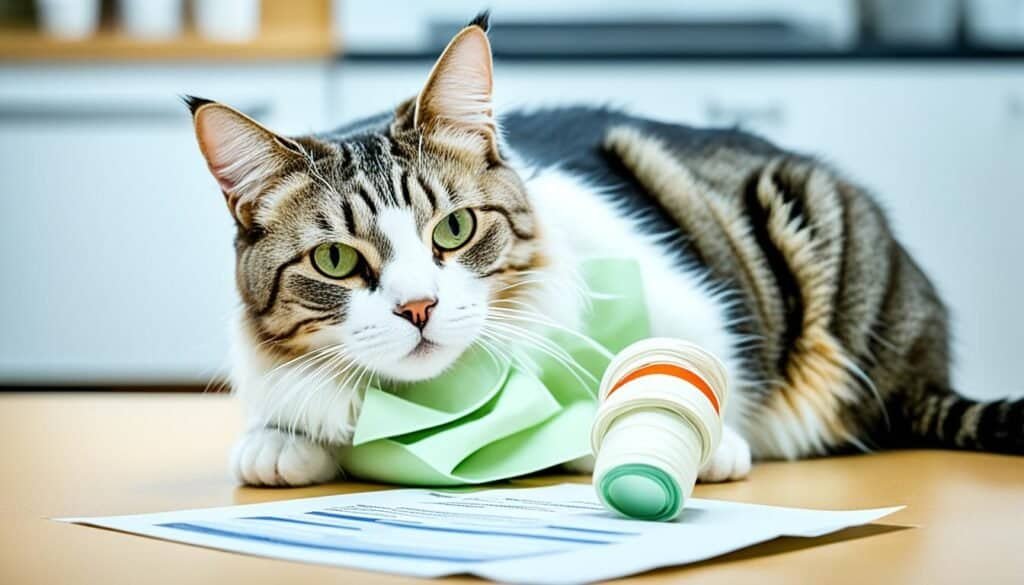
In addition to vaccinations, cat spaying/neutering is another important veterinary procedure. Spaying or neutering your cat not only helps prevent unwanted litters but also provides health benefits, such as reducing the risk of certain reproductive cancers and behavioral issues. It’s advisable to consult with your veterinarian to determine the appropriate age for this procedure.
Routine check-ups with your veterinarian are vital for maintaining your cat’s overall health. Regular examinations allow your veterinarian to detect any potential health issues early on and provide necessary treatments or interventions. These check-ups often include dental examinations, parasite screenings, and general health assessments to ensure that your cat is in optimal condition.
To provide financial assistance in case of unexpected medical expenses, it’s worth considering cat health insurance. Just like human health insurance, cat health insurance covers a portion of your cat’s medical costs, making it more affordable to seek necessary veterinary care. Research different health insurance options to find a plan that suits your budget and coverage needs.
Key Points:
- Cat vaccinations are crucial for protecting your cat against diseases.
- Spaying/neutering your cat has health benefits and helps prevent unwanted litters.
- Routine check-ups with your veterinarian detect potential health issues early on.
- Consider cat health insurance to provide financial assistance in case of unexpected medical expenses.
Annual Cat Care Costs
While the initial and veterinary expenses are important to consider, it’s essential to account for the annual costs associated with cat care. These ongoing expenses are crucial for maintaining the health and happiness of your feline friend. Let’s dive into the different elements that contribute to the annual cat care costs.
Cat Food Costs
Cat food costs are a significant part of the annual cat care expenses. The price of cat food can vary depending on the brand, quality, and type of food you choose to feed your cat. Generally, a 22kg sack of cat food can range from P1,000 to P2,000. It’s important to select a nutritious cat food that meets your cat’s dietary needs.
Cat Litter Costs
Cat litter costs are another consideration when it comes to annual cat care expenses. The price of cat litter depends on the type and brand you purchase. Clumping clay litter is a popular choice, and a 5kg bag typically costs around P200 to P400. Keep in mind that the frequency of litter changes may vary depending on the number of cats in your household.
Grooming Costs
Grooming is an important aspect of cat care that contributes to the overall well-being of your furry companion. Regular grooming helps maintain a clean coat, prevents matting, and minimizes hairballs. Grooming costs can include brushes, combs, and grooming tools, as well as professional grooming sessions. Depending on your cat’s needs, annual grooming costs can range from a few hundred pesos to a few thousand pesos.
Parasite Prevention Costs
Preventive measures against parasites, such as fleas and ticks, are crucial for your cat’s health and comfort. Annual parasite prevention costs include flea and tick prevention treatments, which can range from P500 to P1,500 per year, depending on the brand and dosage. It’s important to consult with your veterinarian to determine the most suitable parasite prevention options for your cat.
By considering these annual cat care costs, you can plan your budget effectively and ensure that your beloved feline friend receives the care they need. Remember to factor in these expenses when calculating the overall cost of owning a cat.
Hidden Expenses of Cat Ownership
Owning a cat may bring joy and companionship, but it also comes with hidden expenses that can catch owners by surprise. From unexpected veterinary bills to potential damages to furniture, it’s important to be aware of these additional costs.
One of the most significant hidden expenses of cat ownership is unexpected veterinary expenses. Cats, like any other pets, can fall ill or get injured, requiring immediate medical attention. Emergency medical care and treatments can quickly add up, putting a strain on your budget.
Another hidden expense to consider is the potential damage that cats can cause to furniture. Cats are known for their curious nature and natural instinct to scratch. This can lead to scratched or torn upholstery, damaged carpets, and other costly repairs or replacements.
Additionally, regular home cleaning becomes necessary when owning a cat. Cats shed fur and track litter around the house, which can result in increased cleaning costs for vacuuming, sweeping, and mopping. Maintaining a clean and hygienic environment is essential for both the cat’s well-being and the owner’s comfort.

While these hidden expenses can add up, there are ways to manage and mitigate them. Planning ahead and budgeting for potential veterinary expenses can help alleviate financial burdens. Investing in cat-friendly furniture or providing appropriate scratching posts can minimize damage to your belongings. Regular grooming and upkeep can also reduce the need for expensive cleaning services.
By understanding and preparing for these hidden expenses, cat owners can ensure a smooth and financially manageable experience while enjoying the love and companionship of their feline friends.
Affordable Cat Care Options
For cat owners on a budget, there are many affordable options available for providing quality care to your furry friend. From adoption to grooming and veterinary care, here are some budget-friendly alternatives to consider:
Cat Adoption from Shelters
Instead of purchasing a cat from a breeder, consider adopting one from a local animal shelter or rescue organization. Not only will you be giving a homeless cat a loving home, but adoption fees are typically much lower than buying from breeders. By adopting, you can save money and provide a forever home to a cat in need.
Low-Cost Veterinary Clinics
Routine veterinary care is essential for the health and well-being of your cat. However, veterinary expenses can add up quickly. Look for low-cost veterinary clinics in your area that offer discounted services such as vaccinations, check-ups, and spaying/neutering. These clinics often provide high-quality care at a fraction of the cost, allowing you to keep your cat healthy without breaking the bank.
DIY Cat Grooming
Grooming is an important part of cat care, but professional grooming services can be expensive. Consider learning basic grooming techniques and grooming your cat at home. Regular brushing, nail trims, and ear cleaning can be done easily and affordably, helping you save money on grooming expenses.
Budget-Friendly Cat Toys
Entertaining your cat doesn’t have to be costly. Instead of buying expensive toys, get creative and make your own DIY cat toys. Simple items like cardboard boxes, paper bags, and feathers can provide hours of fun for your feline friend. Not only will you save money, but homemade toys can be just as enjoyable for your cat.
By exploring these affordable cat care options, you can provide your furry friend with the care and attention they deserve while staying within your budget. Remember, a happy and healthy cat doesn’t always require expensive solutions.
Conclusion
Owning a cat comes with financial commitments and expenses that should be carefully considered when budgeting for cat ownership. From the initial costs of purchasing or adopting a cat to the annual expenses and hidden costs, it’s important to factor in these financial aspects to ensure a happy and healthy life for your feline companion.
To make cat ownership more affordable, explore various affordable cat care options. Consider adopting a cat from shelters or rescue organizations, as this not only helps a homeless cat find a loving home but also comes with lower adoption fees compared to purchasing from breeders. Low-cost veterinary clinics provide an alternative for routine medical care, making it more budget-friendly.
Another way to manage costs is by opting for DIY cat grooming and homemade cat toys. This allows you to provide adequate care and entertainment for your cat while reducing expenses. By thinking creatively and exploring affordable options, you can enjoy the companionship of a cat without breaking the bank.
FAQ
What are the initial costs of cat ownership?
How much do cat supplies cost?
What are the veterinary expenses for cats?
What is cat health insurance, and why should I consider it?
What are the annual cat care costs?
Are there hidden expenses of cat ownership?
What are some affordable cat care options?
How can I budget for cat ownership?
Last modified: February 26, 2024



